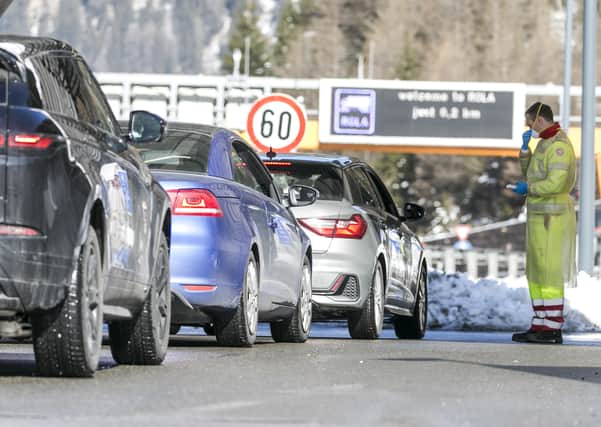Coronavirus: History offers hope about effect on the economy – Bill Jamieson


Enough, already. Our best response to the coronavirus epidemic is to look to the future when we will be over the worst of this. The debate now is whether we will have a ‘V’ shaped or ‘U’ shaped recovery.
But between now and then, the coronavirus infection is set to spread markedly – and a recession is in prospect.
Advertisement
Hide AdAdvertisement
Hide AdFurther measures will soon be announced to curb social gatherings and restrict movement. The EU’s open borders are crumbling as barriers rise. Austria is demanding that anyone arriving at its borders from Italy has a certificate to say they are coronavirus-free – try getting one when the country is in lockdown. The EU has failed to act to enforce even the common standards that do exist, never mind ones that probably should in response to coronavirus.
At the extreme is Italy where restrictions now cover the entire country. Sports and leisure events are forbidden, travel restricted, streets deserted, restaurants closed and cafes and shops empty.
For one of the most outgoing and most visited countries in the world with a population of 60 million, it is beyond imagining. How compliant will Italians prove? And how could Scotland cope in similar circumstances, with weeks of self-isolation and national lockdown?
Would we all behave? Will our patience last with such restrictions? The hope is that, even allowing for a sharp escalation from the small number of cases here so far – 380 confirmed cases, six deaths – we shall avoid the extreme of Italy. The UK Government assures us there is no cause to panic. But many do not share reassurances that the NHS can cope. Panic-buying has stripped shops of loo rolls and hand cleansing gel, and in my local supermarket all the Paracetamol and Nurofen tablets have gone: you cannot even buy an aspirin.
Supplies in due course will be replenished and panic-buying will subside. But further restrictions on movement are expected soon. Aside from the immediate impact on the lifestyles and behaviour of millions of people, the measures mark a new level in national healthcare and well-being. Barriers to such measures in other areas will become less easy to defend. We struggle with 1,238 alcohol-related deaths a year and 1,187 drug-related fatalities. High-risk drinking is also reckoned to account for 686 hospital admissions a week. Behaviour change is critical to tackling these.
Meanwhile, what can we expect once the peak of infection has passed? Economic and financial prediction at any time is fraught with dangers as a timely book, Radical Uncertainty: Decision-making for an unknowable future, by Mervyn King, the former Bank of England governor, and the economist John Kay reminds us. We need to be more open to the fact that the future is radically unknowable. Expect things to be unpredictable. Make room for what they call “radical uncertainty”.
Gales of creative disruption
What might we learn from history? The overriding lesson is that economies and markets recover. The Great Depression of the 1930s, the stagflation of 1973-75, the sterling crisis and recession of 1990-91 and the global financial crisis of 2008-09: each brought forecasts of dire poverty and the end of days. But these recessions worked to trigger remarkable advances in innovation and enterprise. As the brilliant economist Joseph Schumpeter wrote 70 years ago, economic crises give rise to gales of creative disruption. And this crisis will be no different.
The same applies to financial markets. The 48 per cent stock market fall over the 21 months of the 1973-74 oil crisis was followed by a 126 per cent rally over the subsequent 74 months. Black Monday in 1987 saw a 34 per cent fall wiped out by a 582 per cent rally over the subsequent 147 months. And the 2008-09 financial crisis which saw 57 per cent fall over 17 months was followed in the subsequent 129 months by a 378 per cent rally.
Avoiding the worst
Advertisement
Hide AdAdvertisement
Hide AdSeveral scenarios can be mapped out. The most popular is a ‘V’ shaped recovery where a relatively contained virus outbreak results in a short, but steep, fall in economic output, before an equally steep recovery.
But this looks unlikely, given the more wide-ranging economic impacts of this global outbreak. A more realistic recovery would be ‘U’ shaped – one where the global economy experiences a more gradual slowdown as the virus plays out before experiencing an equally gradual recovery.
More worrying, but unlikely, is a sharp initial slowdown, followed by a prolonged period of stagnation as output fails to recover due to virus control measures. Monetary policy may prove ineffective, but fiscal measures to help businesses, combined with containment and everyday public responses, should help avoid this worst of outcomes. An ‘M’ shaped future? Don’t even go there.
Comments
Want to join the conversation? Please or to comment on this article.
